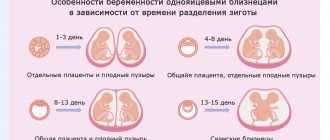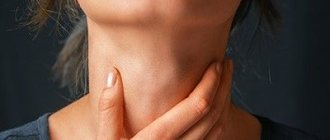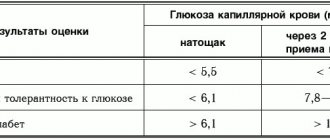Date of publication: 05/16/2018
until January 31
You get 10% cashback when purchasing a gift certificate More details All promotions
Why does everyone have a chance to get chickenpox and what could be the consequences?
JSC Family Doctor - The beginning of chickenpox
The name “varicella” or “chickenpox” is telling (unlike many other diseases). This means that the disease was isolated quite a long time ago - before the era of developed medicine, and it was named by the people, and not by professional doctors, who would probably have used some Latin terms. The word “smallpox” shows that the disease necessarily occurs with rashes (the words “rash” and “smallpox” have the same root). “Chicken” is an indication of the volatility of the infection. Both are fair, and at the same time there is something to be deceived about.
Let's start with the fact that until the 18th century, chickenpox was considered a type (mild form) of smallpox itself (“natural smallpox” as it is now commonly called). At the same time, smallpox itself is a very serious disease (now disappeared thanks to vaccination), with a high probability of death, leaving permanent deep pits on the skin - pockmarks. Chickenpox is considered a mild disease for children, and the rash caused by it disappears quickly and without a trace. But only in 1772, the German doctor Vogel identified chickenpox as a separate nosological unit, coming up with a special name for it - varicella (diminutive of variola - the Latin name for smallpox), something like “smallpox”. The fact that smallpox and chickenpox are completely different diseases became completely clear later, already in the 19th century, when a smallpox epidemic swept across Europe. Against the backdrop of this terrible picture, it turned out that chickenpox had absolutely nothing to do with it. And today we know why this is so - smallpox and chickenpox are caused by different pathogens.
Wind also got into the name of chickenpox unjustifiably. Yes, chickenpox is a highly contagious disease. If one of your child’s classmates gets chickenpox, be sure that 90% of the class will get it (of course, if the guys haven’t had it before). But the wind will definitely not carry the virus into your window. The chickenpox virus (a type of herpes virus – Varicella Zoster) does not survive well in the external environment. Varicella Zoster is a record holder for virulence (the ability to infect the human body), in its case it is close to 100%; and in a closed room (classroom) one source of infection is enough to make many people sick. But in the fresh air the virus will quickly die. So why did people associate the disease with the wind? But because it is often impossible to say from whom you got infected. Chickenpox has a long incubation period (two weeks), during which there are no obvious symptoms of the disease, and the person may already be contagious. It has been established that you can become infected with chickenpox from a virus carrier 3-5 days before the rash appears. Being close to such a person, it is easy to get sick without even thinking that you are at risk of infection. Who infected whom can only be determined later, by who came down with a fever first or who developed a rash first.
Childish and harmless?
JSC Family Doctor - Chickenpox is a predominantly childhood disease
Chickenpox is considered a childhood disease. This does not mean that only children get sick, but if the probability of getting sick is very high, then, most likely, you won’t have long to wait until you get sick - childhood will not have time to end. Up to 6 months, the child is protected by innate immunity, but then the risk of getting sick increases. While a child is being raised at home, he does not have many places where he can encounter the virus, but when he begins to socialize - goes to kindergarten or school, an encounter becomes almost inevitable.
There are a lot of childhood diseases, and, as a rule, they try to prevent the disease, for which immunoprophylaxis is carried out - the child is given appropriate vaccinations. There are no vaccinations against chickenpox in the National Preventive Vaccination Calendar. Or rather, there is, but this vaccination is recommended only for those who are at risk (primarily those who have problems with immunity - HIV-infected people, cancer patients, those who suffer from severe chronic diseases). Why is that?
It is believed that you only get chickenpox once: a stable, specific immunity is formed that lasts a lifetime. That is, it is enough to get sick in childhood, and you will not encounter this disease again. In any case, this statement is true for the vast majority. In childhood, chickenpox is easily tolerated. But if childhood is behind you, and you haven’t encountered chickenpox, then it’s better to avoid it in the future. Adults suffer from this disease much worse. So, if you are an adult who has not had chickenpox, then it is better to play it safe and get vaccinated.
When should you contact a specialist?
In the vast majority of cases, herpes zoster can be diagnosed independently.
But urgent medical attention is needed in the following situations:
- if rashes appear on the face. There is a chance that the rash will spread to the eyes, which can severely damage the child's vision. The doctor will take measures to prevent the infection from spreading to the eyes;
- if the child has a weakened immune system. Complications such as superficial streptococcal skin infections and other nerve-related problems (facial paralysis, balance problems, and hearing problems) can occur. In some rare cases, inflammation of the brain has been reported;
- painful rashes. If the child complains that the rash is very painful and itchy;
- you are not sure that the rash is shingles;
- no signs of healing even after 14 days.
If you suspect that your child is developing herpes zoster, it is better to immediately contact a specialist for diagnosis.
And here it is - chickenpox...
First, the child complains of feeling unwell: suddenly he has a headache, body aches, and a sore throat. It is clear that he is unwell, but what kind of illness is still unclear. Then (a few hours later or the next day) the temperature rises, and a rash appears against its background. However, there may be no fever or symptoms preceding it, but there will definitely be a rash.
The elements of the rash have their own “life cycle”: small red spots turn into bumps resembling mosquito bites (papules), then liquid accumulates in them (such elements are called vesicles). The vesicles burst, and crusts appear in their place, which then fall off, revealing clean skin. The transformation of papules into vesicles usually occurs within 24 hours; crusts appear a couple of days after the formation of vesicles. But they take longer to disappear – this can take up to two weeks.
The rash appears in waves, as people say - “sprinkles.” At the same time, there may be papules, vesicles, and crusts on the child’s body. On average, the rash period lasts from 5 to 8 days. It is believed that five days after the last elements of the rash appear, the child ceases to be contagious.
In other words, there is reason to believe that in just over a week the disease will pass, and it will leave behind a short-lived memory in the form of crusts, which will also disappear without a trace. It is hardly possible to speed up recovery. Therefore, all treatment for chickenpox is symptomatic. It is aimed at eliminating the problems that the disease brings with it. The first problem is temperature. If it is not high (and it may not exist at all) or if the child easily tolerates high temperature, it is better not to bring it down at all. Consult your doctor - he will tell you how to act specifically in your case.
JSC Family Doctor - Treatment of Chickenpox
The second problem is itching. The chickenpox rash is very itchy, but you can’t scratch it. The virus accumulates in the vesicles, and scratching can cause additional spread of the rash throughout the body. Also, damaged vesicles heal less well, their contents can fester (in this case, the vesicles turn into pustules), and in their place, pockmarked pits form, which do not disappear for a long time.
Make sure your child does not sweat: sweat increases the itching. Change your underwear more often.
In our country, it is customary to smear chickenpox rash with brilliant green. The treated vesicles dry out faster, preventing the possibility of their inflammation. This will not make the child recover any faster, but sanitary treatment of the rash is encouraged. In the end, brilliant green is a good marker: if you don’t need to smear anything else, it means the rash has stopped and the disease is over.
If new elements of the rash no longer appear, you can (and should) go for a walk with the child. However, you should stay away from other children, as it will still be contagious for some time.
When all the vesicles have crusted over, the child can be washed, but it is better not to use any shampoo or soap. Under no circumstances should you rub your child with a washcloth - touches should be gentle so as not to tear off the scabs. It’s better not to wipe it with a towel, but to blot it.
Symptoms
Shingles usually begins with a burning, tingling, itching sensation in the area where the rash will eventually develop.
Sometimes this pain can be severe, and the child will complain of extreme skin sensitivity. This discomfort usually occurs several days before a visible rash appears. Often children will also experience other associated symptoms such as:
- headache
- fever and chills
- malaise
- nausea
- body aches
- enlargement of lymph glands.
A few days after the onset of discomfort, a characteristic herpes rash appears on the skin (or, which is rare, after a few weeks). It first appears as a cluster of small red spots that eventually develop into small blisters.
These fluid-filled blisters eventually rupture, and the small sores slowly begin to dry out and crust over. The scabs fall off after a few weeks, and the rash disappears in about two to four weeks.
It's more difficult with adults
In adults, chickenpox is usually more severe than in children. The duration of the disease increases. The prodromal period (preceding the appearance of the rash) lasts longer - up to 5 days. The temperature is often high (can reach 39-40 °C). The period of rashes also lengthens - on average it is 10 days. The rash covers not only the skin, but also the mucous membranes - nasopharynx, genitals. This can also happen in children (as an exception), but in adults such localization is typical (occurs in almost 100% of patients). Vesicles often turn into papules (that is, they fester). They get wet, heal poorly, and in their place pockmarked pits form. Various complications are possible.
Even for those who were sick in childhood and, it seems, should have immunity against chickenpox, the Varicella Zoster virus can give an unpleasant surprise. If for some reason (age, serious illness) general immunity is reduced, the disease may be in a different form - in the form of herpes zoster. Herpes zoster is caused by the same virus as chickenpox. The virus can sleep in the body, and then, under favorable conditions, become active. Or it can penetrate from the outside: if an elderly person happens to be next to a child suffering from chickenpox, this may be enough. Therefore, if you have a lowered immune system, it is better to take extra care.
How to treat chickenpox in children? (diagnosis, symptoms and treatment)
Red spots appeared on the baby's face. What is this? Allergy? Mosquito bites? What if the body temperature rises?
With questions about a disease such as chickenpox, we go to an appointment with the pediatrician at the Expert Tula Clinic, Valeria Aleksandrovna Golovko.
— Valeria Aleksandrovna, what is chickenpox and how does it manifest itself in children?
This is an infectious pathology, also known colloquially as “chickenpox”.
The symptoms of chickenpox are varied. This is the appearance on the skin and mucous membranes of a specific rash in the form of spots, nodules and blisters. Elements of the rash are found on the face, scalp, body, arms and legs. They appear one after another, i.e. First a spot or papule appears, and then a vesicle. Later, crusts form in place of the opened blisters, falling off after 1-2 weeks. At the same time, the palms and soles remain clean.
Rashes on the mucous membranes are accompanied by pain, itching and the formation of erosions and even ulcers.
Fever, malaise, and decreased appetite and sleep are also noted.
— What causes chickenpox?
Varicella Zoster virus. It belongs to the herpes viruses.
What is herpes? Candidate of Medical Sciences, dermatovenereologist at Clinic Expert Tula says:
Sheinkman Vladislav Leonidovich
— How is chickenpox transmitted?
The disease can be contracted through airborne droplets from a person with chickenpox and herpes zoster (shingles). The virus spreads when a person talks, coughs or sneezes.
— Is chickenpox a childhood disease or can adults get it too?
Children are predominantly affected, but cases of infection in adults are also common.
— Is it possible to get chickenpox again or does it only happen once?
Different situations are possible. Suppose a person was ill in childhood, but for some reason the immune system was unable to “cope” with the virus completely. In this case, the virus can remain in the so-called nerve ganglia in an inactive state. Under certain conditions, it is able to reactivate, often manifesting as shingles. This could be, for example, during exacerbations of chronic pathologies, severe stress, hypothermia, or after suffering some kind of infectious disease.
The situation described is not a re-infection. However, this is also possible in principle. This risk exists in the elderly; persons receiving chemotherapy or hormone therapy; after organ transplant operations; infected with human immunodeficiency virus. In other words, with a significant weakening of the immune system.
Is it true that unvaccinated children are the healthiest? Ulyana Vladimirovna Chemova, pediatrician, allergist-immunologist at Clinic Expert Smolensk, tells the story.
It is currently believed that the chickenpox virus does not mutate, but it cannot be ruled out that it will in the future. In this case, we can assume the occurrence of repeated infections with classic manifestations of this disease.
From personal experience: in 12 years of working in the pediatric department, I have not observed repeated cases in the same child.
— Why is it better to have chickenpox in childhood?
Because in this period of life it is much easier to bear. In people over 20 years of age, the infection is severe; after the illness, there is a high risk of complications that are dangerous not only to health, but also to life.
An example from practice: I witnessed a case of this disease in an adult woman who was sick at the same time as her child. She had a severe infection: with sharp rises in body temperature up to 40°C, severe headache, sensitivity to light and sound, hallucinations, profuse large painful rash, and swollen lymph nodes.
— Is it worth deliberately infecting a child with chickenpox?
No, you shouldn't do this. Chicken pox greatly undermines a child's immunity. Like any infection, it causes serious intoxication. The nervous system is subjected to significant stress, the cardiovascular system and musculoskeletal system suffer, and the respiratory system is affected.
How to strengthen a child's immunity? Read more
After chickenpox, a child may begin to suffer from respiratory infections more often than usual. Therefore, immediately after recovery it would be wrong to go to kindergarten or school.
How long is a person with chickenpox contagious?
It becomes contagious from the end of the so-called incubation period, that is, 2-3 days before the appearance of the elements of the rash, and remains so for 4-5 days after the appearance of the last bubbles.
— Is chickenpox a harmless disease or can it have negative consequences?
How dangerous is chickenpox for children and adults? Sometimes it leads to the development of complications. Among them, for example, are the addition of a bacterial infection to the skin in areas affected by the virus; inflammatory processes of the oral cavity, larynx, trachea, lungs, meninges and brain tissue, joints, myocardium, kidneys; swollen lymph nodes; sepsis.
If a pregnant woman becomes infected a few days before giving birth, the probability of illness in her child increases to 17%, and 30% of the sick newborns, alas, die.
— Adults who had chickenpox in childhood remember that the main problem with this disease is severe itching. How can parents help their baby relieve itching? What is the best way to lubricate a chicken pox rash?
Antihistamines and some products for external use, including those containing antiviral agents, will help relieve skin itching.
The “green stuff”, known to many, does not relieve itching, but to some extent dries and disinfects the wound, and allows you to control the appearance of new rashes.
How to properly smear a rash with chickenpox? Every morning, new blisters on the body are smeared with a solution of brilliant green. Observe the intensity of their occurrence. One day the bubbles will stop forming. From this point on, after 5 days, the infectious agent will become inactive.
— How to avoid complications with chickenpox?
To do this, you must contact your doctor in a timely manner and follow all his recommendations. During treatment, it is necessary to carefully monitor the cleanliness of the baby’s hands and the length of the baby’s nails in order to avoid contamination of the wounds on his skin.
— Tell us about the “dos” and “don’ts” for chickenpox. For example, is it possible to bathe a child with chickenpox?
“It is possible”: take water procedures even in the first days of the appearance of elements of the rash. Their absence can contribute to the transformation of the rash into abscesses due to contamination of the skin and the accumulation of bacteria on it. A short warm shower (but not a hot bath!) helps to maintain sanitary standards. After showering the baby, you should not wipe it, but gently pat the skin dry with a soft towel.
“Do not”: treat skin rashes with a 5% alcohol solution of iodine - it is irritating; violate home routine from the moment the first elements of the rash appear and for 5 days after the formation of the last blisters; use aspirin for antipyretic purposes - this increases the risk of developing Reye's syndrome (rapidly progressive cerebral edema and the development of liver complications in the form of liver failure, mortality reaches 20-30%); tear off/comb the crusts.
— Valeria Aleksandrovna, what should be the diet for a child with chickenpox?
It is recommended to drink a lot during illness. The diet should be dominated by fermented milk products, vegetables, and fruits. Fried and fatty foods should be avoided. They can contribute to increased skin itching.
— How many days does it take for chickenpox to go away?
During this disease, periods such as incubation, prodromal and the period of appearance of rash and crust formation are distinguished.
The incubation period is the period of time from the moment a microbial agent enters the body until the manifestation of the disease. Duration - 11-21 days (average 14 days).
The prodrome occurs 1-2 days before the first elements of the rash appear. In childhood, the manifestations of this period are not pronounced; in adults they are more severe (headache, pain in the lumbar and sacral area, increased body temperature are noted). Then comes a period with rashes (for both 2-5 days and 7-9 days).
In the uncomplicated classical course, recovery occurs within 10 days from the moment the first elements of the rash appear. The period of infectivity ends 5 days after the appearance of the last rash.
— Is there a vaccine against chickenpox?
Yes. Several types of chickenpox vaccine have been registered and approved for use in our country. After vaccination, lasting immunity is formed.
You might be interested in:
What will help with a cough: badger fat or mustard in socks? We treat children correctly
What to do if your child has a stomach ache?
How to save a child from hay fever?
For reference:
Golovko Valeria Alexandrovna
Graduate of the Faculty of Medicine of Tula State University in 2004.
In 2005, she completed an internship in the specialty “Pediatrics”
Currently working as a pediatrician at Clinic Expert Tula LLC. Receives at the address: st. Boldina, 74
Chickenpox during pregnancy
If a woman did not have chickenpox as a child, she may become ill during pregnancy. In fact, the likelihood of this happening is low. Tests done on those who do not remember that they had chickenpox show that the vast majority (up to 90%) already have antibodies to Varicella Zoster in their blood, that is, they still had contact with the virus.
There is a group of infections united by the principle of danger to the fetus and the health of the unborn child - the so-called ToRCH infections. The chickenpox virus is not included in this group. Although the “H” in ToRCH stands for herpes, it refers to herpes infection types I and II (“herpes simplex”), not Varicella Zoster. Compared to classic ToRCH infections, chickenpox is less dangerous.
Still, it’s better to try not to get sick. If you have chickenpox in the first trimester, miscarriages and undeveloped pregnancies are possible. Sometimes chickenpox leads to congenital malformations and deformities of the child (congenital chickenpox syndrome) - in approximately 1% of cases. In general, the risk to the fetus during this period is about 5%. In the second trimester, the risk of any consequences is even lower (no more than 1-2%).
Chickenpox is most dangerous just before childbirth. If a mother gets chickenpox 7-10 days before delivery, then the child may be born already sick with chickenpox (about 10-20% of cases), and this is dangerous (various complications, even death). Therefore, during this period it is better to play it safe and exclude contacts with children who have not had chickenpox - potential virus carriers.
Make an appointment Do not self-medicate. Contact our specialists who will correctly diagnose and prescribe treatment.
Chicken pox and herpes zoster
Varicella Zoster can cause two diseases with a similar clinical picture and etiology: chickenpox and herpes zoster. While chickenpox mostly affects children, shingles most often develops in adults or the elderly. Both pathologies have the following symptoms:
- The onset of the disease is acute: the patient complains of a sharp disturbance in health, headache, and fatigue. On examination, febrile fever up to 39-39.5°C is noted.
- After 12-48 hours, vesicles form on the patient’s skin and epithelium - small pock-shaped vesicles filled with transparent or whitish content.
A characteristic difference between lichen and chickenpox is that the rashes with herpes zoster are located along the nerve trunks, which is caused by damage to cell processes by the virus. Vesicles are usually localized in the intercostal space, collar area, neck and cheekbones. The rash that has formed gives the patient intense pain, which can only be relieved with the use of local and general analgesics.
Attention!
The causative agent of herpes zoster can provoke disturbances in the functioning of the central nervous system. When this pathology is detected, in most cases the patient requires hospitalization.
Shingles develops due to exposure to the same pathogen as chickenpox and has clinical manifestations similar to it. That is why the pathology in some cases is diagnosed as a repeated case of chickenpox or its complication.
Treatment
Treatment for herpes zoster is aimed at reducing the impact of the virus, as well as relieving pain.
There are several medications that can be used; talk with your doctor about the best treatment options for your specific situation.
The vast majority of cases of herpes zoster can be treated at home. In some situations, immunocompromised children or children with severe symptoms and/or complications may require hospitalization.
Antiviral drugs. Used in the fight against the varicella zoster virus. These drugs help shorten the course of the disease, reduce the severity of the disease and speed up the healing of skin lesions. They will also help prevent possible complications that sometimes occur. Antiviral drugs are most effective when started within 3 days of the first appearance of the rash, but in some cases of herpes zoster (for example, in a patient with a weakened immune system), they can be started after 72 hours.
There are several antiviral drugs that can be used. These are Acyclovir, Famciclovir and Valaciclovir (the last two are not prescribed to children under 12 years of age).
- Means to reduce pain. Some doctors prescribe topical creams or sprays, skin patches, or oral medications to minimize pain caused by the virus. In some cases, medications such as Paracetamol, Ibuprofen may be recommended to combat pain.
- Treatment of inflammation. If the rash spreads to the eyes (which is a major complication of herpes zoster), your doctor will prescribe antiviral medications along with steroids to reduce the rash. Topical corticosteroids are sometimes helpful in reducing skin inflammation, although they should only be used under the guidance of a doctor.
- Medicines to relieve itching. Your doctor will prescribe antihistamines to relieve the itching of the rash.
- Caring for damaged skin. Skin rash care can be provided with home remedies and may provide some relief from symptoms. Calamine lotion is applied topically to the rash to relieve itching. And cool wet compresses have a calming effect.
It is important to maintain good personal hygiene, avoid scratching the affected area, and try to keep the area clean to prevent secondary bacterial skin infection.
Shingles cannot be completely cured because the virus is rarely killed by any antiviral drug. However, its emergence and development can be effectively stopped. A strong immune system prevents the virus from reactivating and multiplying.
Therefore, children with herpes should be provided with a healthy diet rich in protein and vitamin C throughout their lives. This is the best preventative measure against shingles.
Complications of herpes zoster
In general, herpes zoster goes away on its own, with or without treatment, and does not cause any serious conditions.
In rare cases, lichen can cause complications:
- constant pain (postherpetic neuralgia). Damaged nerve fibers in the skin send erratic impulses to the brain, causing pain that may last long after the rash has gone away;
- vision problems. If ringworm develops on or near the eyes, it can lead to blindness;
- skin infections. The rash can become infected with bacteria, which leads to skin problems (streptoderma, for example);
- disorders of the nervous system. Herpes on the face can affect various nerves that connect to the brain. This can cause problems related to nerves (facial paralysis, hearing loss, and balance problems). Rarely, herpes leads to encephalitis.









